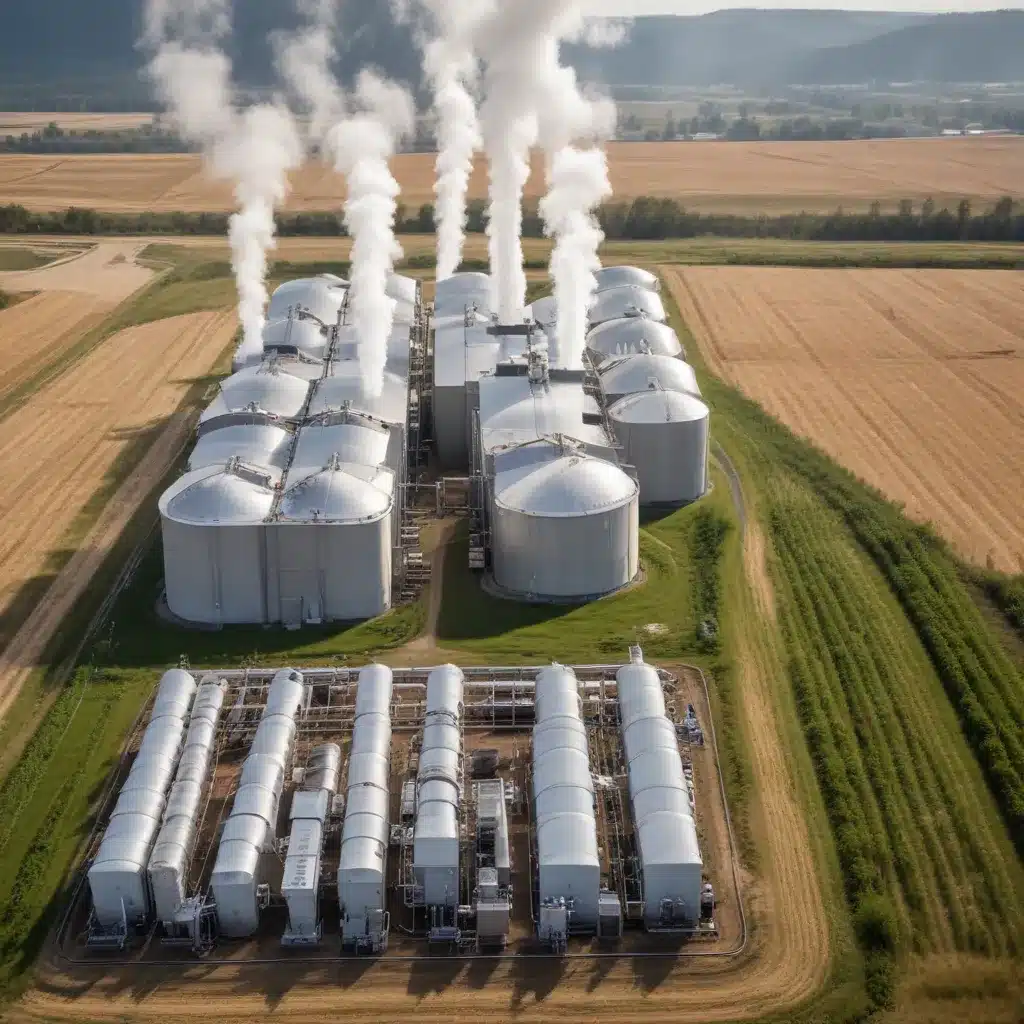
As Europe accelerates its transition to clean energy, the role of bioenergy with carbon capture and storage (BECCS) is gaining increasing prominence. BECCS presents a unique opportunity to not only generate sustainable energy, but also actively remove carbon dioxide (CO2) from the atmosphere, offering a pathway to achieve net-negative emissions.
Bioenergy Production: Feeding the Clean Energy Transition
At the heart of BECCS lies the production of bioenergy—energy derived from organic, renewable sources such as biomass. Europe’s bioenergy sector has seen steady growth, with innovations in feedstock selection and conversion technologies driving greater efficiency and sustainability.
Feedstock Considerations: Biomass sources range from agricultural residues and energy crops to forestry byproducts and municipal waste. Careful selection of these feedstocks is crucial, balancing factors like availability, energy density, and environmental impact. Emerging technologies like gasification and pyrolysis can unlock a wider range of biomass, including lower-quality materials, enhancing the scalability of bioenergy systems.
Conversion Technologies: Bioenergy can be produced through various conversion pathways, including direct combustion, anaerobic digestion, and Fischer-Tropsch synthesis. Advances in these technologies are improving performance, reducing costs, and expanding the applications of bioenergy, from heat and power generation to the production of liquid and gaseous biofuels.
Sustainability Challenges: While bioenergy offers substantial environmental benefits, its widespread adoption also raises concerns about land-use changes, biodiversity, and competition with food production. Addressing these challenges through sustainable biomass sourcing and efficient conversion processes is crucial for the long-term viability of the bioenergy sector.
Carbon Capture and Storage: Locking Away Emissions
Seamlessly integrating carbon capture and storage (CCS) technologies with bioenergy production is the key to unlocking the full potential of BECCS. This coupling enables the capture, transport, and permanent storage of the CO2 generated during bioenergy conversion, effectively removing it from the atmosphere.
Capture Techniques: Several CCS methods are available, each with its own advantages and limitations. Chemical absorption, adsorption, and membrane separation are among the most mature capture technologies, while emerging options like cryogenic distillation and solid sorbents promise improved efficiency and lower energy requirements.
Storage Options: The captured CO2 can be safely sequestered in various geological formations, such as depleted oil and gas reservoirs, saline aquifers, and unmineable coal seams. Monitoring and verification protocols are essential to ensure the long-term integrity of these storage sites.
Geological Sequestration: The process of injecting and permanently storing the captured CO2 underground is known as geological sequestration. This approach, when combined with robust monitoring and verification measures, offers a reliable and scalable solution for long-term carbon removal.
Integrated Bioenergy-CCS Systems: Unlocking Negative Emissions
By coupling bioenergy production with carbon capture and storage, BECCS systems can deliver significant environmental and climate benefits.
Greenhouse Gas Removal: The key advantage of BECCS lies in its ability to actively remove CO2 from the atmosphere. As plants grow, they absorb CO2 through photosynthesis, which is then released during the bioenergy conversion process. By capturing and permanently storing this biogenic CO2, BECCS can achieve negative emissions, effectively reversing a portion of the greenhouse gas buildup in the atmosphere.
Emissions Reduction: In addition to carbon removal, BECCS also contributes to the overall reduction of greenhouse gas emissions by displacing fossil fuel-based energy generation. This dual-pronged approach of emissions avoidance and removal makes BECCS a valuable tool in the fight against climate change.
System Integration: Integrating bioenergy and CCS components requires careful planning and optimization to maximize the technical and economic feasibility of BECCS projects. Factors like biomass logistics, capture technology selection, and CO2 transportation and storage infrastructure must be carefully aligned to ensure the seamless operation of the entire system.
Scale-up Potential: As BECCS technologies mature and deployment increases, economies of scale and learning-by-doing effects are expected to drive down costs and enhance the scalability of these systems. This will be crucial for realizing the full potential of BECCS in achieving Europe’s ambitious climate goals.
Economic and Policy Implications: Enabling BECCS Deployment
The widespread adoption of BECCS will depend on addressing the economic and policy challenges that currently hinder its large-scale deployment.
Cost Considerations: BECCS projects typically involve significant upfront capital investments, as well as ongoing operational expenses for biomass procurement, energy consumption, and CO2 transportation and storage. Targeted policy support and innovative financing mechanisms will be necessary to bridge the cost gap and make BECCS projects financially viable.
Policy Landscape: Governments across Europe are taking steps to incentivize and enable BECCS deployment. Initiatives like the EU’s Carbon Removals Certification Framework, the US Carbon Dioxide Removal (CDR) Purchase Pilot, and Denmark’s NECCS Fund are providing much-needed policy support and creating a favorable environment for BECCS investment.
Deployment Barriers: Despite these policy advancements, barriers to BECCS deployment persist, including the lack of CO2 transport and storage infrastructure, the need for harmonized regulatory frameworks, and the complex logistics of biomass supply chains. Overcoming these challenges will require coordinated efforts among policymakers, industry stakeholders, and the research community.
Societal and Ethical Aspects: Addressing Concerns and Tradeoffs
The widespread deployment of BECCS also raises important societal and ethical considerations that must be carefully navigated.
Public Perception: Engaging with local communities and addressing public concerns about the environmental and social impacts of BECCS projects is crucial for garnering public acceptance and support. Transparent communication and inclusive stakeholder engagement will be essential in this regard.
Equity Concerns: The implementation of BECCS must consider the equitable distribution of benefits and burdens, ensuring that marginalized communities are not disproportionately affected by the deployment of these technologies.
Sustainability Tradeoffs: The expansion of bioenergy production can lead to competition with food production and water resources, as well as potential land-use changes that impact biodiversity and ecosystem services. Careful management and innovative approaches are needed to minimize these tradeoffs and ensure the long-term sustainability of BECCS systems.
As Europe continues its transition to a clean energy future, the coupling of bioenergy with carbon capture and storage emerges as a promising pathway to achieve net-negative emissions. By addressing the technical, economic, and societal challenges, BECCS can play a vital role in Europe’s quest for a sustainable and climate-resilient energy landscape.






